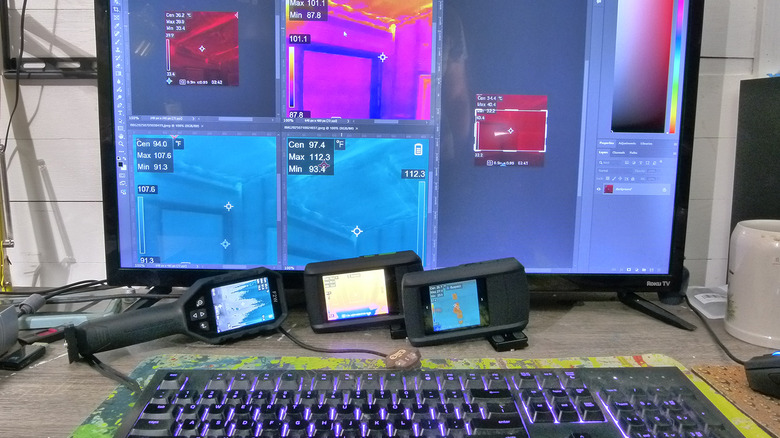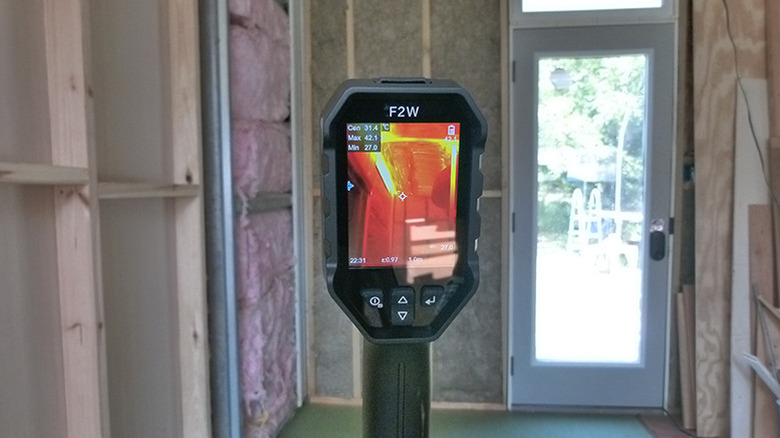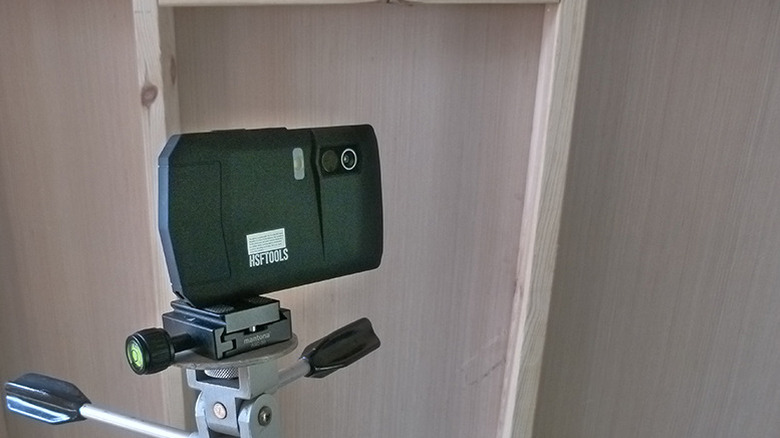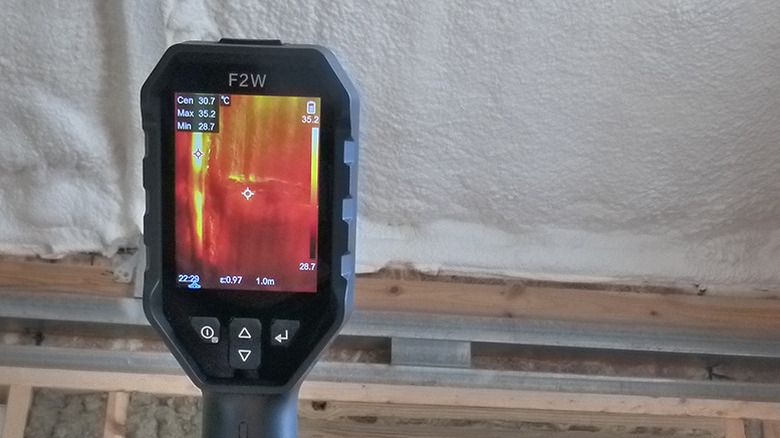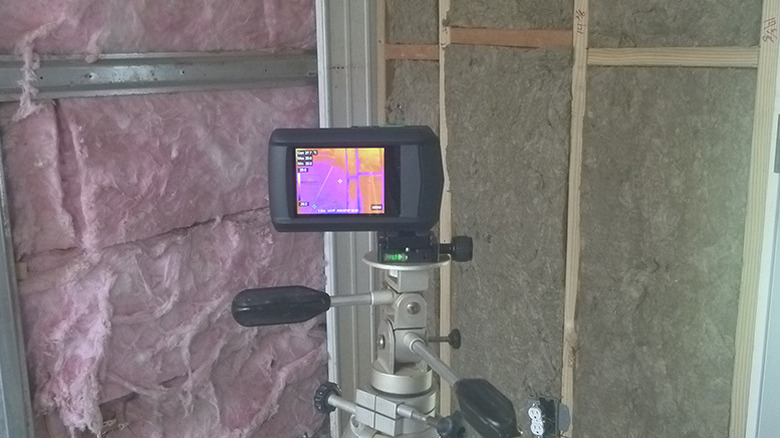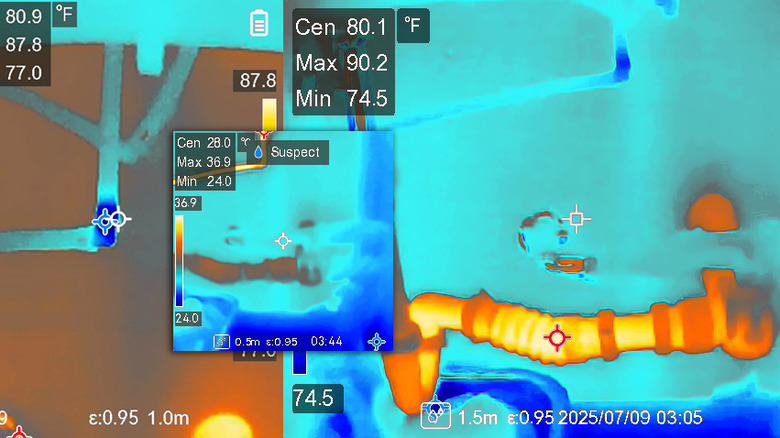HSFTools IntellFault Is Like Having A Brilliant Thermal Imaging Interpreter By Your Side
Sponsored Content. The sponsor may receive a commission on purchases made from links.
I've found insulation leaks. I've traced water leaks. I've looked for hot spots in a car's engine bay. I've looked for bees in a church wall (and found them ... lots of them). But even with as much time as I've spent with thermal imaging cameras in recent years, the images can be a bit bewildering. All those colors, all the possible meanings, and all of my inexperience add up to a decent shot at misdiagnosing the problem or, maybe worse, simply missing it.
HSFTools has a solution, and they're the right people for the job. Focused on delivering professional-quality tools at reasonable prices, the company has become something of a darling of the DIY home maintenance set. The only problem was that some of the pro-level features — the shifting temperature ranges encoded in the images, the array of color palettes available, and the extreme sensitivity of the HSFTools cameras — could provide more information than the average homeowner can parse without experience.
The solution for HSFTools handheld and pocket series thermal cameras is something called IntellFault. That kinda sounds like both a good thing and a bad thing, but it's a decidedly good thing. The idea of IntellFault is to use algorithms derived from deep learning (I think that means AI) to help homeowners new to thermal imagers find suspicious situations quickly and accurately.
IntellFault steals the scene with pro power
There is, I suppose, no reason a home inspector, HVAC pro, plumber, or other experienced tradespeople wouldn't want to take advantage of the efficiencies of IntellFault. After all, these are experts in high demand, and anything that can speed up their schedules is like printing free money. But the stakes for homeowners are different and, in a very real way, much higher. Because the time of those inspectors and plumbers is so highly valued, it can be punishingly expensive to have an experienced professional bring his thermal imager and look for trouble spots in your home's walls, ceilings, floors, ductwork, etc. The idea of the IntellFault system is that you can have all of that expertise in a device that costs as little as $200.
The cameras' Scene mode — which particular problem you're tasking IntellFault with identifying — is available as a free firmware upgrade for owners of HSFTools' HF96, HF96V, HP96, F2W, F2VW, and P2W handheld and pocket models. The "scenes" are algorithms designed to find problems related to water leaks and insulation. The higher-resolution F2VW, F2W, and P2W models also get advanced insulation- and condensation-related functions. (The smartphone cameras are excluded from this update, and my guess is that the tiny and otherwise fantastic phone models don't have the horsepower to run the algorithms and all their imaging duties at the same time.)
Just looking around, thanks
To check out IntellFault, what I really needed was some known problems. I'm in the process of converting our back porch to an additional bedroom with an en suite bath, and this sort of process affords many opportunities to leak both water and air. The original exterior walls had standard fiberglass bat insulation that has settled into over-large cavities in what are basically double-stud walls, with 2x4 interior framing and 2x2 square structural steel tubes for the (formerly) exterior walls. I'm using Rockwool in the new exterior walls, and some design changes have caused me to close up a couple of windows, so those bays are currently uninsulated. Finally, the original roof was metal, which we had spray-foamed in order to prevent seasonal condensation from dripping inside the ceiling. And there are just plain strange spaces created by combining traditional framing with the original steel porch framing that aren't yet as well-insulated as they could be.
There were a few other opportunities. We have an outbuilding that recently got an acoustical upgrade, in the form of sound-dampening panels being installed in every stud bay where I don't have Rockwool Safe'n'Sound soundproofing insulation. This seemed like a good opportunity to attempt to detect some fairly subtle insulation deficiencies. I also have a known water leak and enough dimwittedness to attempt an electrical fault. I also tracked down one nearby family with in-floor heating, which is not altogether common here in the South, but since their installation was new, it seemed unlikely to suffer from any real problems, so I went with my own property's set of issues.
Using the thermal cameras with IntellFault
With an advanced thermal imager, the easiest thing to do is simply point the thing somewhere and see what you see. Helping you see is what IntellFault is designed to do. No need to worry about things like maintaining consistent temperature ranges from scene to scene. But IntellFault does require a little of you, and happily it's very little. The firmware upgrade on my HF96V took almost exactly five minutes to install the firmware update and reboot the camera, and the P2W was about the same. I immediately selected the insulation scene and looked around.
The custom scene function was a little confusing at first, but only because I dove in without looking at instructions, in the manner of my tribe. The advanced scene features available on the P2W and other 256-pixel-resolution cameras needs some configuration and are more precise, as you'd expect. For those advanced insulation and condensation functions, you have to give the processor a little information (indoor and outdoor temperature, for example) to help it draw informed conclusions. (This process is usually clear, although one of the parameters that you use for fine-tuning is called Insulation Level, and I couldn't figure out exactly what number it was looking for. I guessed that it's the percentage of optimal insulation present in a wall or other structure, and got accurate results with it set to 60-70%.) When the basic algorithm you've selected thinks it's spotted a problem, "Suspect!" appears at the top of the screen. When you're using insulation- and condensation-related pro scenes, the camera will colorize potential trouble spots, in blue and green respectively.
Finding insulation issues with IntellFault
I started in the acoustically treated outbuilding with the HSFTools HF96, an entry-level handheld model. At the time, the indoor and outdoor temperatures were essentially the same, so I didn't expect to find much. I did notice that I'd get a positive when an LED transformer was right at the edge of the screen, but once I centered that point of heat in the center of the screen the warning (correctly) went away. Situations that I expected to cause a false positive simply didn't, like a row of LEDs strung at the top of the wall, which looked like nothing so much as a warm air leak on the camera's screen. I then moved on to the addition that's under construction. I have been fairly careful while insulating it, and it seemed to have paid off. The camera noted many differences in temperature, especially anywhere the original porch's steel support structure created a thermal bridge, but nothing so extreme as to trigger IntellFault.
One thing I'd recommend when using the software for detecting basic insulation issues is to use a palette that doesn't over-emphasize temperature differences. Some palettes show minor differences in positively alarming color contrasts that could easily cause one to panic for no reason. The built-in Red Hot and White Hot palettes are pretty good for this. IntellFault will let you know when to freak out.
Measuring other issues with IntellFault
I have one known leak in my plumbing ... a mis-aligned PEX crimp in the hot water supply to my kitchen's second faucet. (We have a weird shallow sink that looks like something from a turn-of-the-twentieth-century sanatorium bathroom, and it takes two faucets.) The leak is so minor that (probably depending on ambient temperature) it often doesn't seem to leak at all, and when it does it's so minor that it's nearly impossible to detect. But IntellFault found it, which I suppose means I now have to fix it.
My findings ... so far
IntellFault's report card to date is pretty promising. IntellFault detected four issues, including the leaking PEX coupling that wasn't actively dripping or wet. I'm not sure how this even works, but the joint is notably cooler than other joints in the hot water line, so perhaps what's going on is that the leak is active, but evaporates before becoming an observable drip. If this is, in fact, what's happening, that's a remarkable catch on the part of the software. My general impression was that the default IntellFault functionality that works on both 96- and 256-resolution devices is perfectly sufficient for most homeowners. The advanced insulation issue detection works better, but requires a bit of fine-tuning, and I assume the condensation pro scene is very good as well, though I haven't tested it yet.
Honestly, there's a part of me that's grateful to IntellFault for making me pay a little more attention. This is hard to explain, but I've begun to use thermal imagers more broadly, and that might make me more prone to miss the revelations they're most useful for. For example, my home's plumbing operates from a dual-manifold distribution system, and it's fascinating to see how quickly water entering the home warms, and how quickly hot water cools as it sits in the pipes. As I'm doing this bit of navel-gazing, it's nice to know that IntellFault will let me know if I happen to also have a water leak.
